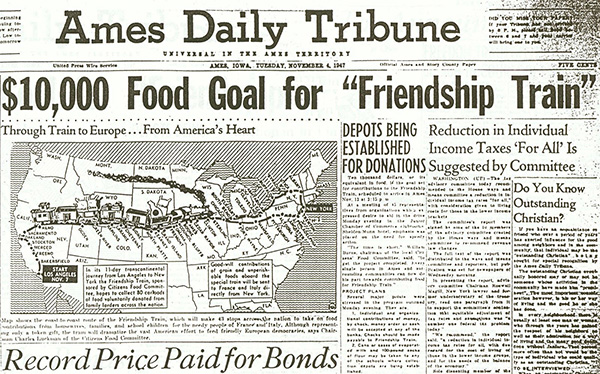Drew Pearson

Andrew Russell Pearson (December 13, 1897 to September 1, 1969) was born in Evanston, Illinois. In 1902 the family moved to Pennsylvania, where his father, Paul Pearson, became a professor of public speaking at Swarthmore College.
Drew Pearson was one of the best-known American columnists of his day, noted for his syndicated newspaper column, “Washington Merry-Go-Round.” He also had a program on NBC Radio entitled “Drew Pearson Comments.” Often he attacked conservative politicians, such as Joe McCarthy and Ronald Reagan.
Pearson was educated at Exeter Academy and Swarthmore College, where he edited the student newspaper, The Phœnix. In 1919 Pearson traveled to Serbia where he spent two years rebuilding houses that had been destroyed during the First World War.
After returning to America, Drew taught industrial geography at the University of Pennsylvania. In 1923 he embarked on a worldwide tour visiting Japan, China, Australia, New Zealand, and India. He paid for his trip by writing stories for an American newspaper syndicate.
He taught briefly at Columbia University before returning to journalism, reporting on anti-foreigner demonstrations in China (1927), and in 1928 the Geneva Naval Conference, and the Pan American Conference in Cuba.
In 1929 Pearson became Washington correspondent of the Baltimore Sun. Three years later he joined the Scripps-Howard syndicate, United Features. His Merry-Go-Round column was published in newspapers all over the United States.
Pearson was a strong supporter of Franklin D. Roosevelt and his New Deal program. He upset the more conservative editors when he advocated United States involvement in the struggle against fascism in Europe. Pearson’s articles were often censored, and so in 1941 he switched to the more liberal Washington Post.
During the Second World War, Pearson became a radio broadcaster. Soon he became one of America’s most popular radio personalities. After the war he was an enthusiastic supporter of the United Nations and helped to organize the Friendship Train project in 1947. The train traveled coast to coast collecting gifts of food for those people in Europe still suffering from the consequences of the war. Images below are from this period.


In the early 1950s Pearson was one of few journalists to stand up against Sen. Joe McCarthy. Along with George Seldes, I. F. Stone, Walter Lippmann, Jack Anderson, Edward R. Murrow, and Herb Block, Pearson played an important role in McCarthy’s downfall. The following video is a portion of a “Washington Merry-Go-Round” segment from Fall, 1953. Duration is eight minutes, 40 seconds, and includes an interview with then-former President Harry S Truman, hosted by Mr. Pearson.